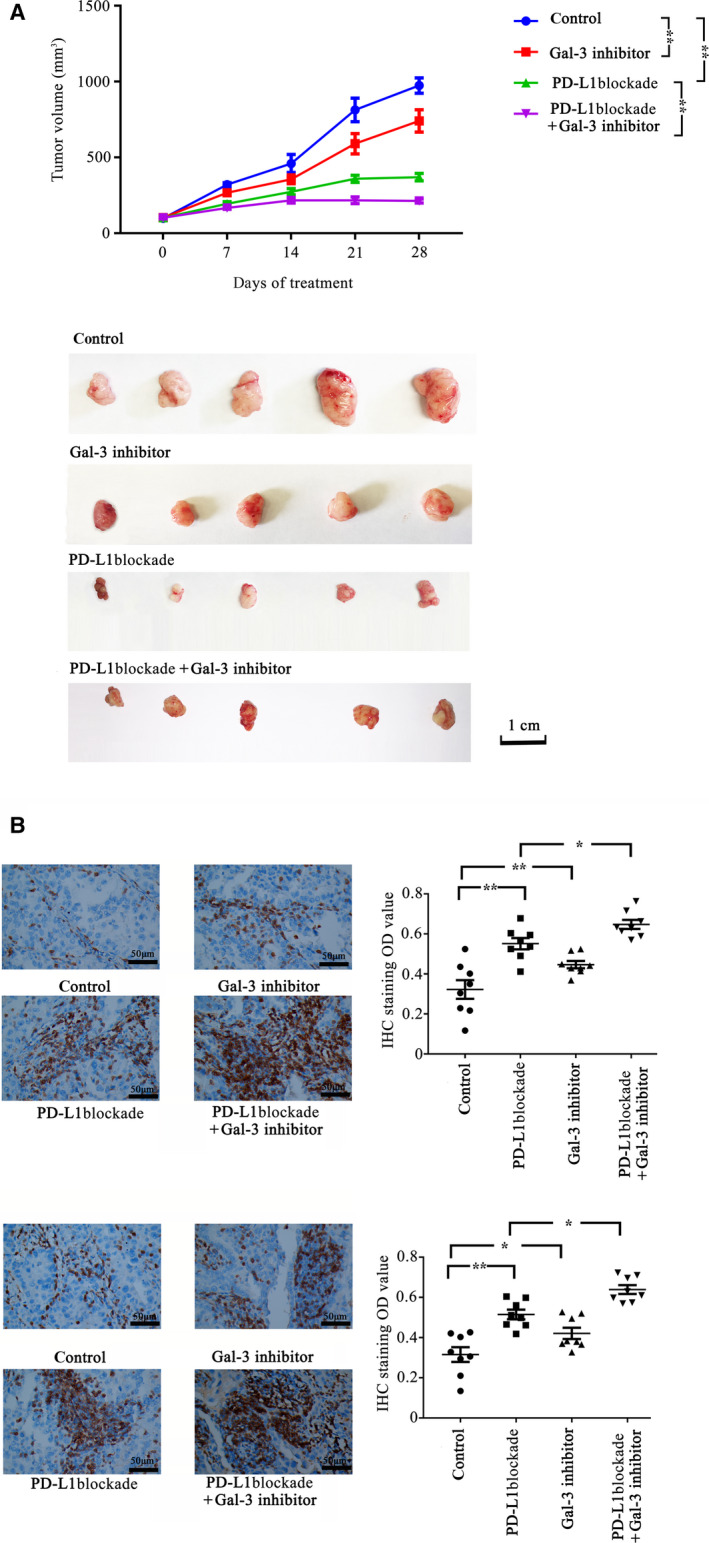Fig. 4.

Synergistic antitumor effect of PD‐L1 blockade and Gal‐3 inhibition on tumor growth. BALB/C nude mice were injected with A549 lung cancer cells. When tumor volumes reached 100 mm3, all mice received a tail vein injection of PBMCs (1 × 107 cells) on days 1 and 8; the mice (eight mice/group) also received different treatments: PD‐L1 blockade (200 μg, twice per week), Gal‐3 inhibitor (10 mg·kg−1·day−1), PBS (control). (A) Tumor growth was monitored, and tumor growth curves were generated based on the tumor volume. The data showed that treatment with PD‐L1 blockade (P = 0.000) or Gal‐3 inhibitor (P = 0.026) alone can significantly inhibit tumor growth compared with the control. The combination of a Gal‐3 inhibitor and PD‐L1 blockade led to a synergistic antitumor effect (the tumor growth inhibition rate of the combination group was 0.21, and P = 0.000, PD‐L1 blockade vs. PD‐L1 blockade + Gal‐3 inhibitor). Representative images of xenograft tumors are shown in figure. Scale bar, 1 cm. (B) Immunohistochemistry for CD3 and granzyme B in xenograft tumors. The mouse xenograft experiments were performed as described in the Materials and methods. Combined therapy significantly increased the number of CD3+ TILs (P = 0.015, PD‐L1 blockade vs. PD‐L1 blockade + Gal‐3 inhibitor) and granzyme B‐positive cells (P = 0.021, PD‐L1 blockade vs. PD‐L1 blockade + Gal‐3 inhibitor) compared with the monotherapy groups. Scale bars, 50 μm. Data are shown as the mean ± SEM. (*P < 0.05, **P < 0.01 by two‐way ANOVA, or by two‐tailed t‐test).
